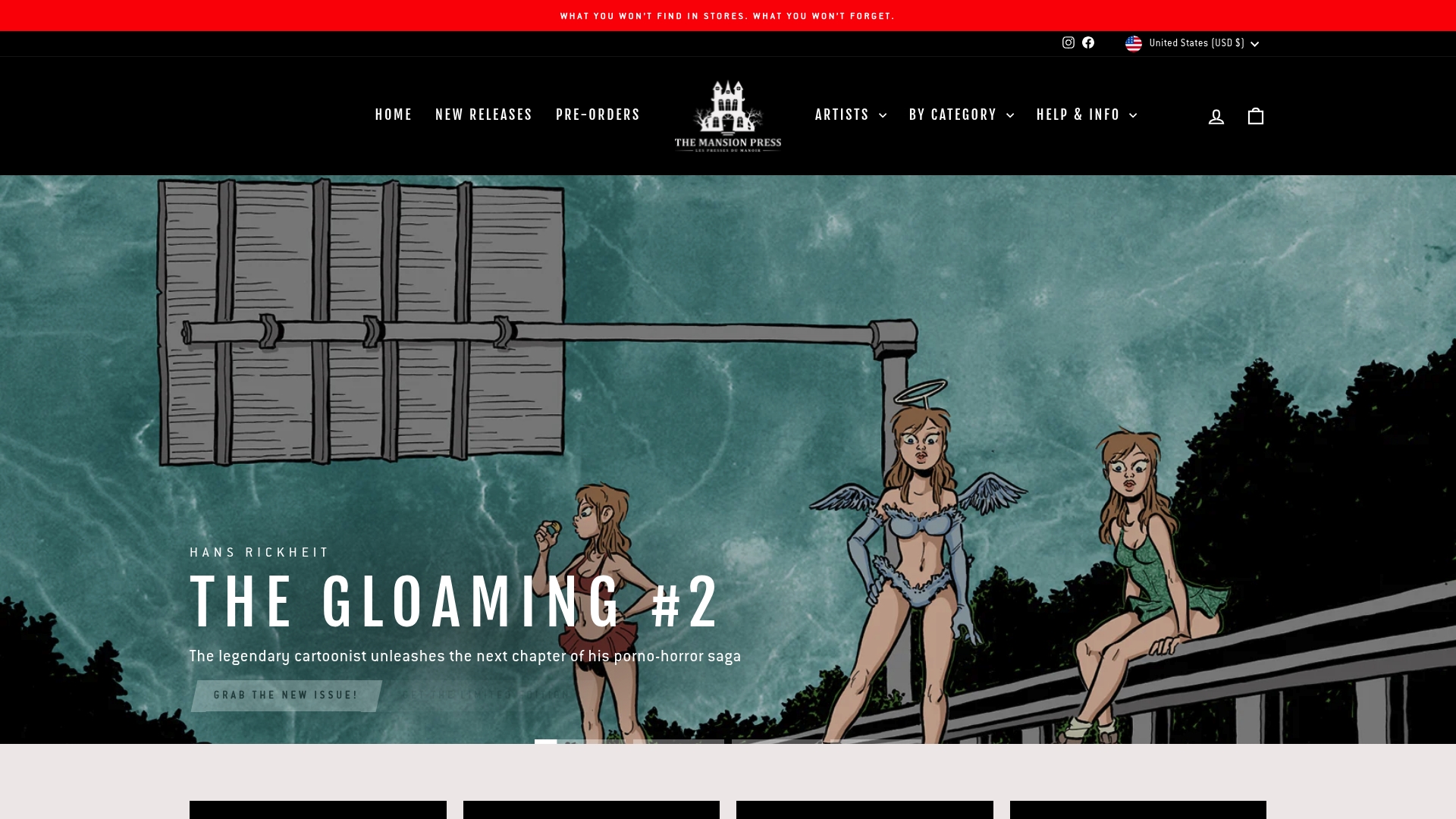Starting a Graphic Novel Collection: A Step-by-Step Guide
Over 80 million graphic novels are sold worldwide each year, proving just how powerful and popular this storytelling format has become. Whether you are drawn by stunning artwork or rich narratives, starting your own collection can feel complicated without a clear plan. Setting smart goals, researching must-have titles, and understanding how to organize, source, and protect your graphic novels will help you build a collection that is both enjoyable and valuable.
Table of Contents
- Step 1: Define Your Graphic Novel Collection Goals
- Step 2: Research And Identify Must-Have Graphic Novels
- Step 3: Source Titles From Curated Retailers And Creators
- Step 4: Organize And Catalog Your Collection Effectively
- Step 5: Protect And Display Your Graphic Novels For Preservation
Quick Summary
| Key Point | Explanation |
|---|---|
| 1. Define collection goals carefully | Set specific objectives that align with your interests and budget for a meaningful collection. |
| 2. Research must-have graphic novels | Utilize expert lists, award-winners, and reviews to build a diverse collection reflecting artistic merit. |
| 3. Source from reputable retailers | Purchase from established comic stores, online retailers, and direct publishers to ensure authenticity. |
| 4. Organize your collection systematically | Implement a detailed cataloging system based on genres, creators, or themes to track and manage your volumes. |
| 5. Preserve and protect your graphic novels | Use proper storage methods and handling techniques to maintain the quality and value of your collection. |
![]() |
|
Step 1: Define your graphic novel collection goals
Building a graphic novel collection starts with setting clear and focused objectives that match your interests and budget. This critical first step will guide your entire collecting journey and help you create a meaningful personal library.
According to trainingforcomics.com, establishing a realistic pace is crucial. Start by defining specific parameters for your collection. Ask yourself key questions: Are you interested in specific genres like science fiction or historical narratives? Do you want first editions, signed copies, or complete series? Your goals might include:
- Collecting works from specific artists or publishers
- Focusing on particular storytelling genres
- Acquiring limited edition or rare volumes
- Building a comprehensive series collection
Stephaniebroder.com emphasizes the importance of organization in achieving collection objectives. Create a detailed tracking system tracking your current collection and future acquisitions. Consider using a spreadsheet or dedicated collection management app to monitor your progress.
Warning: Avoid impulsive purchases that do not align with your defined collection goals. Stay disciplined and strategic to build a cohesive and meaningful graphic novel library.
With your goals clearly defined, you are now ready to move forward with researching and planning the initial acquisitions for your unique graphic novel collection. Your next step will involve understanding the market and identifying potential sources for your targeted volumes.
Step 2: Research and identify must-have graphic novels
Researching and identifying must-have graphic novels requires a strategic approach that combines expert recommendations, critical acclaim, and personal interests. This step will help you build a thoughtful and comprehensive collection that reflects both artistic merit and your unique taste.
According to Wikipedia, the American Library Association’s ‘Great Graphic Novels for Teens’ provides an annual list of notable titles that can serve as an excellent starting point for collectors. These curated selections offer credible guidance across various genres and styles. Start your research by exploring:
- Professional recommendation lists
- Award winning graphic novels
- Critical reviews from respected comic book critics
- Recommendations from comic book stores and online communities
Wikipedia highlights Scott McCloud’s ‘Understanding Comics: The Invisible Art’ as a seminal work that provides deep insights into comic book history and artistry. This resource can help you develop a more nuanced understanding of graphic novel selection and appreciation.
Tip: Create a wishlist or tracking system to monitor the graphic novels you want to acquire. This helps prevent duplicate purchases and allows you to strategically budget for your collection.
With a solid research strategy in place, you are now prepared to start identifying and acquiring the must-have graphic novels that will form the foundation of your unique collection.
 Your next step involves exploring specific purchasing channels and authentication methods.
Your next step involves exploring specific purchasing channels and authentication methods.
Step 3: Source titles from curated retailers and creators
Sourcing graphic novels from reputable retailers and creators is a critical step in building a meaningful collection. This process requires strategic research and a keen understanding of where to find authentic and high-quality titles.
Buffalolib reveals that professional libraries often collaborate with established distributors like Baker & Taylor, Brodart, and Ingram to source graphic novels. You can leverage similar strategies by exploring multiple purchasing channels such as:
- Independent comic book stores
- Online specialized retailers
- Direct publisher websites
- Comic conventions and art markets
- Authorized online marketplaces
As Wikipedia highlights through the example of DC Comics’ ‘DC Compact Comics’ line, some publishers offer specialized editions that can be particularly appealing to collectors. These curated versions often provide unique formats or commemorative releases that add distinctive value to your collection.
Tip: Always verify the authenticity of rare or limited edition graphic novels. Research the publisher, check edition details, and consider purchasing from verified sellers to protect your investment.
With a solid understanding of sourcing strategies, you are now prepared to explore the nuanced world of graphic novel acquisition.
Your next step involves developing a systematic approach to purchasing and preserving your selected titles.
Step 4: Organize and catalog your collection effectively
Organizing and cataloging your graphic novel collection transforms a random assortment of books into a meaningful archive that reflects your passion and collecting strategy. This crucial step helps you track your acquisitions, understand your collection’s composition, and preserve its long-term value.
Scholastic suggests utilizing comprehensive categorization methods that go beyond simple shelving. Consider organizing your collection through multiple lenses such as:
- Genre classification
- Publication date
- Creator or artist
- Thematic elements
- Historical significance
- Personal reading experience
Wikipedia highlights how academic approaches to comics studies can provide sophisticated frameworks for collection organization. Implementing systematic cataloging methods can transform your collection from a mere accumulation of books into a curated scholarly resource.
Tip: Invest in a digital cataloging tool or spreadsheet to track your graphic novels. Include details like purchase date, condition, estimated value, and personal notes to create a comprehensive collection management system.
With your collection now systematically organized, you are prepared to develop a strategic approach to collection maintenance and potential future expansions. Your next step involves understanding how to preserve and protect your graphic novel investments.
Step 5: Protect and display your graphic novels for preservation
Preserving and displaying your graphic novel collection requires thoughtful strategies that protect these valuable artistic works from damage while allowing you to enjoy their visual beauty. This step is about creating an environment that maintains the integrity of your carefully curated collection.
Wikipedia emphasizes the importance of understanding the physical characteristics of graphic novels to implement appropriate preservation techniques. Different paper qualities and binding styles demand specific care approaches. Consider these essential preservation strategies:
- Use acid free archival storage boxes
- Handle volumes with clean white cotton gloves
- Store volumes vertically to prevent spine damage
- Control environmental temperature and humidity
- Avoid direct sunlight exposure
- Use protective mylar sleeves for rare editions
Wikipedia highlights how printing and paper quality variations in the Modern Age of Comic Books influence preservation methods. Some graphic novels require more delicate handling based on their specific production characteristics.
Tip: Invest in professional grade conservation materials specifically designed for graphic novel preservation. Cheap or inappropriate storage solutions can inadvertently cause long term damage to your collection.
With your graphic novels now properly protected and displayed, you are ready to develop a long term strategy for maintaining and potentially expanding your collection. Your next step involves understanding the ongoing care and potential value appreciation of your graphic novel investments.
Elevate Your Graphic Novel Collection with Unique Finds at The Mansion Press
Starting a graphic novel collection means more than just buying books. You want exclusive editions, carefully curated works, and authentic artistry that truly reflect your passion and collection goals. The challenge lies in sourcing rare volumes and limited editions while ensuring your collection grows with purpose and style. Whether you seek compelling storytelling genres, signed copies, or standout artist collaborations, having access to a trusted source is essential.

Discover an exclusive collection of artbooks, comics, and collector’s editions at The Mansion Press. With a focus on independent creators and unique releases not found in traditional stores, it is the perfect place to find your next prized graphic novel. Act now to explore limited pre-orders and special editions that align with your collecting ambitions. Start building a personal library that tells your story by visiting The Mansion Press and experience the joy of owning artfully crafted graphic novels today.
Frequently Asked Questions
What should I consider when defining my graphic novel collection goals?
Start by identifying your interests and budget. Consider factors like specific genres, editions, and whether you want to focus on particular artists or publishers to set clear guidelines for your collection.
How can I organize my graphic novel collection effectively?
To effectively organize your collection, categorize your graphic novels by genre, publication date, or creator. Using a spreadsheet can help track details like purchase dates and conditions, ensuring a comprehensive overview of your library.
What are the best preservation techniques for my graphic novels?
Use acid-free archival storage boxes and protective mylar sleeves to preserve the condition of your graphic novels. Additionally, store your volumes vertically and control the environment to prevent damage from humidity and light exposure.
How can I create a wishlist for must-have graphic novels?
Create a wishlist by researching reputable recommendation lists, award-winning titles, and critical reviews. Updating this list regularly within your budgeting plan will help prevent duplicate purchases and prioritize your acquisitions.
What types of sources should I explore when sourcing graphic novels?
Look into independent comic book stores, online specialized retailers, and comic conventions for authentic titles. Diversifying your sources will help you discover unique editions, so spend time investigating different purchasing channels.
How do I track my graphic novel acquisitions over time?
Implement a tracking system using a digital cataloging tool or a simple spreadsheet. This system should include details like title, purchase date, and estimated value, allowing you to monitor your collection’s growth and maintenance effectively.

